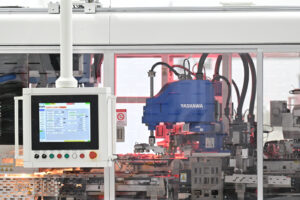The Impact of Tech on the Future of Work: Opening Remarks to Select Committee
Opening Statement to the NSW Parliament Select Committee on the impact of technological and other change on the future of work and workers in New South Wales
Thank you for the invitation to appear today. I do apologise for not appearing in person, but I currently have Covid. I also apologise in advance if I am not firing at 100 per cent. But this is the one appointment in my diary that I was determined to fill this week.
I’m here in my capacity as the director of the Centre for Responsible Technology, an initiative of the Australia Institute, an independent thinktank which exists to support sensible and evidence-based regulation.
Joining me one the Centre’s fellow Professor Mark Andrejovich, a global expert in digital media surveillance, who has can talk to some of the ways technology has expanded the reach of employers through the pandemic.
My colleague professor Toby Walsh, also suffering from Covid, has produced a paper looking set how athletes are now being monitored, as a harbinger of even more intrusive practises in the future. Professor Walsh is available online to speak to his work
**
When we launched the Centre for Responsible Technology in 2019 we identified the unregulated intensification of surveillance in the workplace as a key area of concern.
We also identified the NSW Parliament as a natural home for this sort of regulation, given its importance in establishing nation-leading Workplace Surveillance laws over.
- In the late 1990s, I was proud to work with the acting chair as part of he late and great Attorney General Jeff Shaw’s team in ushering worker protections against video surveillance through the parliament.
- In 2001, working with Unions NSW, those laws were extended to email surveillance, with the radical idea that employers should not routinely snoop on employee email communications.
While little has changed legislatively over the past two decades, the online workplace has become another country altogether.
One critical difference, which we may go into more deeply, is that the regulatory binary of overt-covert surveillance has totally collapsed; today surveillance is assumed.
Our submission, compiled after a roundtable with leading unions in 2020, scans the myriad ways employer surveillance over workers has radically expanded.
The market for technology that observes, captures and repurposes behavioural surplus is fast-moving and self-perpetuating.
Only this month, we have seen the public outcry at Facial recognition technology tracking both consumers and staff in major retailers, with only cursory disclosure and no real accountability.
Absent regulation, technology companies will continue to seek to adapt their products to deliver ‘value’ for employers by squeezing more out of their workers and reducing labour costs.
While this inquiry has rightly spent a lot of time thinking through the rise of the Gig Economy, it is important that the consideration of the collection and exploitation of worker data is not limited to these types of businesses.
While the app-based services in transport, food delivery and increasingly in caring services have data collection at the centre of its employment model, this is not a new approach by employers.
Our submission outlines how worker information is being collected and repurposed in transport, mining, education, logistics and long-haul.
It also shows how the the pandemic and shift to homework has only intensified
monitoring trends with auto-tracking of workflows, down to monitoring employee mouse movements have become accepted staff management.
What’s clear from this review is that the monitoring of workers has gone way beyond work performance monitoring .
- We know that workers in factories fitted with GPS are charting work flows that will ultimately be replicated to see them replaced by automation.
- We also know there are growing secondary markets in data, with the potential for employers;’ to sell their employees data – creating a secondary digital market for their labour.
- And we have seen how companies use employee tracking to identify and intervene in union conversations
So it is not hyperbole to say that workplace surveillance lies at the heart of a 21st assault on worker rights, every bit as calculated and effective as industrial age practises that summonsed in the Factory Acts in the 19th century.
We would submit that a basic responsibility on law-makers is to ensure existing legislation is fit for purpose and it is clear that despite its history of leading on workplace surveillance, that NSW has fallen behind the game.
These laws need a review if not a total rework, with a a return to the core assumption of worker privacy unless there are specific reasons for monitoring – and with clear no-go zones, like union communication embedded in the legal frameworks.
There are other elements of workplace laws which we argue should also be reviewed, including right of entry laws which provides union representatives with the right to review wages books and address members.
Should these rights be extended to give a trusted representative the right to review how the data of worker is collected and used?
We also need to modernise Termination, Change and Redundancy Provisions : are there grounds to extend existing rights for employees to be consulted around change, to be fully informed of the way their data is used by the employer?
Alongside our concrete recommendations, we also invite the committee to reflect on the concrete steps the NSW Government could take to be a model employer when it comes to employee surveillance and monitoring.
As our lived history has shown, this means ongoing review and – might I say – monitoring of the way technology is being applied, with a critical eye placed on proposition that this is simply a prerogative of the employer.
Between the Lines Newsletter
The biggest stories and the best analysis from the team at the Australia Institute, delivered to your inbox every fortnight.
You might also like
Unfinished business for Australia’s corruption watchdog
The National Anti-Corruption Commission (NACC) is the independent body that detects, investigates and reports on serious or systemic corruption in the Australian Government. Four reforms would increase confidence in the NACC and help it expose corruption.
Understanding the Future Made in Australia
The Albanese Government’s industrial policy framework – the Future Made in Australia Act (FMAA) – has finally been unveiled.
Victorian Electoral Recommendations a Mixed Bag for Democracy
Electoral recommendations from a Victorian parliamentary committee should spur action on truth in political advertising laws, but others need further consultation.


